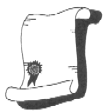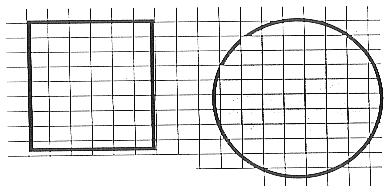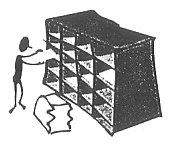 TRIZ
Textbooks: CID Course for Children, 2-1G01 TRIZ
Textbooks: CID Course for Children, 2-1G01 |
  
|
| Introduction.
Acquaintance with Fantasy City.
Topic 1.
Card Index - First Step Towards Creativity |
Fantasy
City:
Course of Creative Imagination
Development (CID),
2nd Grade, 1st Semester,
Methodical Guide-Book |
Natalia
V. Rubina, 1999 [published
in Russian]
English
translation by Irina Dolina,
April 2, 2001
Technical
Editing by Toru Nakagawa, July
15, 2001 |
Posted
in this "TRIZ Home Page in Japan" in English on Jul. 17, 2001 under the
permission of the Author.
(C) N.V. Rubina,
I. Dolina, and T. Nakagawa 2001 |
 |
Introduction.
Acquaintance
with Fantasy City |
Workbook
Hello!
This is the
first lesson after summer vacation… The children have changed very
much, “have grown a whole head taller”. For many of them this was
the time of interesting discoveries in themselves and in the surrounding
world, new impressions, interesting meetings. And of course, the
children not once have found themselves in the situations, where it was
necessary to solve a contradiction, to solve a creative problem.
The CID course for
the second grade is a trip to Fantasy City, where the experience a child
acquired bit by bit will become the basis for mastering methods, getting
the new fantastic ideas, solving the creative problems, carrying out small
creative projects.
1. Warming-up
What games, that exercise
attention, adroitness, and smartness, did you learned during summer?
2. Home-work
Last year we were the
students at the Fairy Tales School. The characters who helped us
during our fairy adventures were together with us. Remember them
and draw each of them.
|
|
Who knows lots of interesting
problems and can solve them? |
|
|
Who can be both big and
small, black and white, warm and cold? |
|
|
Who can assemble and
disassemble everything? |
In the last
frame the children may make a picture of a character, whom they remembered
and liked best (for example, one of those they had designed themselves)
and write down what this character can do.
4. Main topic
The main topic
of the whole course for the second grade is a city, where problems arise
and have to be solved in the course of building cities. Before we
study the method of solving creative problems, we need to learn to change
surrounding systems mentally, predict possible consequences of such changes,
single out the causes of unfavorable consequences (i.e. which subsystems
or properties of systems led to these consequences). To learn how
to reveal and solve arising contradictions is the aim of further studies
on CID Course.
At the first lesson
we’ll look into a rather complicated creative problem and try to solve
it, using the knowledge about systems, their properties and functions.
Solving this problem, the teacher should distinctly single out and define
contradictions and ways of solving them. This will allow us later
to use this problem as an example of solving the similar problems
with the help of a certain method.

Problems surround us,
like the city, where we live. In some cases the source of a problem
may be very simple properties of the systems. For example, this happened
to the city walls that had surrounded our cities in old times. It
is obvious that the main aim of a city wall is to protect as many people
as possible. Let’s think about the properties of a city wall:
the height, the length, the width, the shape. Each property brings
up the problems that are necessary to be solved.
Height: The
height of a wall should be large to protect people and should be small
in order to be built easier.
Solution is to make a
wall toothed. Besides in some places the towers are erected to be
higher than the level of the wall.
Width: A
wall must be thick, to make it more solid, and thin, not to occupy too
much city’s territory.
Solution: the city walls
are made thick and empty inside to use the space between the walls.
Length and shape:
The length of a city wall must be as long as possible to cover a large
territory and as short as possible to be built quicker.
Solution might be different.
It’s possible for example, to add to the city wall the watch-towers; it’s
possible to build if necessary a new wall around a single city wall.
Different shapes of the
city walls may be used. Rectangular shape was used, for example,
in Ancient Rome. This wall was easy to build up with the city growth.
A round wall is more advantageous from the territorial point of view.
Such a shape was used in ancient Moscow, in the course of time a few rows
of city walls were added. The circle shape of these walls has defined
the schemes of Moscow roads and subway.

The length of the wall line is 18 cm [in the
both figures].
Count the small
squares in the walls. Which territory is bigger: in the square or
in the circle?
5. Psycho-technical and developing games
|
(See. “Card index for CID lessons for the second grade” Game series
for working with text information.) |
 |
7. Sum up
One of the
major aims of CID course for the second grade and following grades is to
teach them to work with the Card index.
Home work: find
and write out of the books about Petrozavodsk or from city newspapers,
examples of the interesting solutions referring to the city architecture,
singling out used or transformed properties, as in the problem about “a
city wall”.
|
Topic
1. Card Index -
First Step
Towards Creativity |
Workbook
How to organize
creative, research activity of the elementary school students is not an
easy task. One of the most available and productive ways of organizing
such an activity may be arranging the Card index materials in various fields.
The importance of the card index, the steps in the research work were examined
by M. S. Rubin in his article “Personal card index is the basis of creativity”.
This article is a result of a thorough research of the experience in the
card index arranging, the deep analysis of card index development.
In the commentaries to this theme, the fragments of this article are presented:
“Solving research and
engineer problems, educating and involving into creativity, work of the
artists, composers, writers need the card index of this or that kind.
Here, for example, are the quotation from K. G. Paustovsky’s “The Gold
Rose”: “Every minute, every casual word or glance, every deep or funny
thought, every unnoticed movement of a human heart like a poplar’s fluffs
or a star’s light in a night puddle are the grains of the gold dust.
We, the writers, for decades have extracted these millions of grains, collected
them, turned into a fusion and then made from this fusion our own “gold
rose” – a story, a novel or a poem.” This thought of Paustovski
about the writers’ work may be referred to any kind of creativity.
We’ll be convinced of this lots of times”.
The way to
creativity passes through arranging personal Card Index system or collections
with a unique idea, new, amazing topic. This way is simple and available.
That is why it seems to many people that it can not lead to strong results.
The real cause of refusing to have personal index system is the fear of
a risk: what if nothining come out of it!"
M. S. Rubin: “Personal Card Index Is a Basis Of Creativity”.
1. Warming up
Game on developing
attention and memory. (“Card Index to CID lessons for the second
grade”)
2. Home -work
Examples of interesting solutions in the
city architecture.
3. Introduction to the lesson
Can you tell whether a person says the
truth or lies?
(“Card Index to CID lessons for the second grade”,
section “Gestures”.)
Some unusual
questions are for the beginning of the lesson. You have to agree
that this creative problem is quite often arises. First try to imagine
a situation, where it is necessary to solve such a problem and offer a
solution.
To answer this question,
let’s play the game:
One of the students
goes out and waits to be called.
Three students come to
the blackboard. Let’s decide that one of them will tell the lies,
the rest of them will answer to the questions correctly. The student
standing outside the door has to ask his fellow students a few questions
and to understand, who is telling lies.
During the
discussion of the results of this game, try together with the children
to find out what in particular has helped to understand who was telling
lies. What else can be learned about a person observing his facial
expression and gestures. V. Dragunsky’s story “Secrets become revealed”
presents an interesting and funny situation, where an ability to “read”
gestures and facial expressions helps people to find out what has happened.
4. Main topic
Activity 1.
With the help of brief descriptions of the appearance and behavior of the
popular characters of the children’s books, one should guess right the
novel and the character.
How do these accurate
descriptions appear? |
 |
Discuss with
the children how important it is to be observant. Suggest to give
descriptions of the behavior, habits, appearance of their pets or stray
animals. (It can be memorable, interesting episodes from the books).
 |
“…We made
a card index: three cards for each animal – pink, blue and white.
The white card is a “form”, stating where a species was purchased, in what
condition it entered the Zoo and so on. The pink card is a medical
history, including all information about an animal’s health and treatment.
The blue card is the information about behavior. It seems that the
blue one is the most important card, because it contains records of breeding
games, pregnancies, territorial marks and lots of other information…
…Though the tapirs have been bred in the
Zoo for a long time, three factors that we have discovered by experiment
were not mentioned in any of the books from my home library. First
- that it is nearly impossible to determine the term of pregnancy: a foetus
can not be felt. Second, the milk appears only after delivery.
And third, the mom feeds the baby lying. Besides, a good natured
Clodette allowed us to take milk samples and send them to be analyzed.
If in the future any female tapir in our Zoo somehow has no milk, we’ll
know exactly what mixture to make. All the data was written on the
cards and published in our special report.”
Jerald Darrell: "Catch
A Colobus For Me", Moscow, “Mir”, 1985, pp.29-32. |
Maybe you have some
experiences of your own when purposeful collection of information (card
index) helped in the work, in the search of answers to the difficult questions.
“Card 5. From
N. J. Murashkowski’s card index. (Elgava, Latvia.)
“Crocodiles have many
peculiarities. For example, they don’t have saliva glands in the
mouth, urinary bladder, male species have many stones in the stomach.
Why are they there? It is presumed that the stones make it easier
to swim, making an animal more balanced”.
"Young Naturalist”, No.1, 1990, p.37.
From such examples
Kolya Murashkowski elaborates school problems and even conducts seminar
with adults. When he was a kid, he decided to become a doctor and
began to collect card index materials on biology. By the time he
had a card about a crocodile he was already six years old.
Collecting personal
card index is a convenient and effective form of involving children
in creativity, to be more precise, in one of the most important stages
of creative activity.
For some time it even
seemed to me that a personal card index, like a magic wand, could make
a creator out of a child. It is true: a personal card index is a
direct way to research, creative activities. One of the difficulties
presents itself in the fact that it should be managed on a regular basis.
The biggest difficulty is that the wish to have a card index must come
from the child. An adult’s pushing is not helpful.
I have no universal
recipes how to attract the kids to conduct personal card index, but I can
share my own experience with you:
1. A teacher or a parent must
HIMSELF conduct his personal card index of a creative type.
And a child should see it.
2. The topic of the card index should
be based on inner motivation of a child (a wish to become a doctor, an
interest in conjuring, UFO and so on).
3. At the first stage the most important
thing for a child is mastering the technical skills of card index conducting:
to cut, to glue, to fill in the cards… From the early childhood a
child can be taught to use a computer for preparing the cards.
4. Don’t be surprised and upset when “a
deep motivation” of your child will soon vanish. Look for a new motivation,
new topic, new way of attracting your child to the card index activity.
5. Under no circumstances press the child to
conduct an index card. The price will be his disgust towards this
activity.
6. There are many motivations, that stimulate
the child to conduct the card index: copying the behavior of the adults,
encouraging from them (especially the relatives), interest to a new activity,
using the children’s card index by the adults, competition, using card
index in any activity, using card index in games, making toys, tricks or
just useful and necessary objects. The child will always look for
the usefulness of the card index not in the far future but now or at least
tomorrow.
Sometimes the teachers
at my seminars are surprised : what is new here? Everybody knows
about the importance and usefulness of the card index. This is true.
Two more peculiarities of the creative card index should be added to the
list:
about a card index of IDEAS, not only information;
work on a card index should stimulate NEW IDEAS.
One of the main differences
of a creative card index is its uniqueness. I am not against collecting
butterflies, labels, stamps, beer cans or bubble gum insets. But
now we are talking with you about a different thing - about a creativity.
I would like the readers to see clearly the difference between a creative
card index and ordinary collecting.”
M.S. Rubin “Personal Card Index Is A Basis Of Creativity”.
This year the card index
will not only help you to understand new methods of designing original
ideas, but also with its help to create your own ideas, your own fantastic
stories, your own problems.
For conducting the card
index it is convenient to use the card prepared beforehand. Today
we learn how to fill the cards.
In class we often solve
the problems of “Yes-No” game. Many of you tell them to your friends,
parents, brothers and sisters. But at every lesson we have more and
more problems, and it is becoming more difficult to remember them all and
not to mix anything up. The cards located on the last pages of your
workbooks will help you. Besides, each lesson you will get an assignment
to work with them. Filling 1-2 cards for every lesson you will collect
interesting material by the end of the year.
Pattern of a Card
| 1. Author: |
| 2. Topic:
Yes-No. |
3. Card content: A
man entered the forest and disappeared.
Where is he? |
4. Supplements (an answer to the
problem, a clue to the trick, a picture of a new object , etc.):
A wood cutter has fallen the forest. |
| 5. Source of information:
M.S. Rubin’s Card Index. |
Choose a topic for your
card index. It might be:
-
animals’ life
-
plants’ life
-
“very capable hand“
-
conjuring
-
festivals
-
riddles from the fairy tales, animation and so on.
5. Psycho-technical and developing
games
|
”Card Index to the CID lessons for the second grade”, game series for working
with the text information. |
 |
7. Sum up
“Jules Verne has never
patented inventions, but he described them in his novels. To make
technical and scientific innovations, Jules Verne, through all his life
from his youth, has kept an eye on innovations in science and technology,
wrote out information from the books, magazines, newspapers. His
biographers state that in the great novelist’s card index there were 20
thousand cards with data on technology, geography, physics, astronomy…
Many modern inventors
enrich their personal card index on a regular basis. The foundation
of these card index is usually the information on applying of physical,
chemical and geometrical effects, the descriptions of strong means and
inventory crafts, information about new things and new materials.
To sum up – everything that can be helpful in solving problems.
The card index is being
filled step by step and at a certain point begins to help in searching
for new ideas. Sometimes, an old card helps to solve a difficult
problem easily.
In my card index I have
a piece of paper with an extraction from the book, that is exactly 100
years old. The title of this book is as follows:
WORLD WONDERS
Science for benefit and wealth
of the man.
Three volumes with lots of drawings.
Compiled by
Danilovich and Kustarevsky
Edited by A. Slavsky
Moscow
Publishing Store House
At S. I. Leuhina’s , a bookseller.
1886
|
Here is an extract from this
book:
“89. The instant
blossom of a flower under the influence of electricity.
A conjurer takes a cut-off
bud of any flower, either a rose or a camellia. The branch where
it was cut is covered by wax. The conjurer shows the bud to the audience
to convince them that there is nothing artificial about it and there is
not any devices.
Then he takes away the
wax, fixes the branch of a piece of wire, and inserts it in its turn into
a table, explaining that he is doing so for everybody could see that there
is no replacement.
After that he gives a
sign to his assistant, who connects a battery with the wire and thus electric
current reaches and penetrates the bud. Under the influence of this
great power before the spectators’ eyes the bud begins to increase and
soon it blossoms out, turning into a beautiful flower…”
A hundred years
ago this was a unbelievable conjuring, and now at the lessons of physics
in junior high school the students study: the same charges push away while
different charges attract to each other. The conjurer charged the
petals with the same charges and that was the trick.
The trick is simple,
but it helps to make a quite modern invention, using this hint. In
order to prevent the flower petals from joining together in the strong
wind and in order to keep the pollination continue, it is suggested that
they should be charged with the same charges.”
G. Altov: "And Suddenly The Inventor Appeared", Moscow, “Detskaya
literatura”, 1989, pp. 129-130.
Last updated
on Jul. 17, 2001. Access point: Editor: nakagawa@utc.osaka-gu.ac.jp





